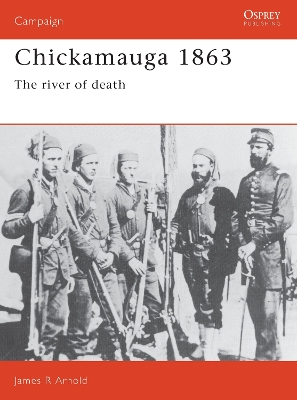Osprey Military Campaign S.
3 primary works
Book 17
In the bloodiest two days of the American Civil War, the Confederate Army of the Tennessee smashed the Union Army of the Cumberland along the Chickamauga creek, an Indian name meaning "river of death". For the first day Union lines held, but on the second a gap appeared in the Union line into which General J. Longstreet marched. The entire Union right collapsed and the army retreated headlong for Chattanooga, all except General George H. Thomas' corps who fought on until nightfall, delaying the Confederate advance and saving the Union. This book describes this conflict.
Book 20
Forewarned of Prussia's intention to declare war on France, Napoleon decided to strike first with a bold advance from Wurzburg into Saxony. On 14 October the double battle was fought: Napoleon with 96,000 men and 120 guns engaged and heavily defeated Prince Hohenlohe and General Ruchel. The decisive engagement was fought further north where Marshal Davout with 27,000 men and 40 guns routed the main Prussian army under Frederick William IV and the Duke of Brunswick. This title examines these two battles, Jena and Auerstadt in detail, showing clearly the swiftness with which Napoleon dealt Prussia's military machine a severe blow.
Book 54
The first major battle in the Western theatre of the American Civil War (1861-1865), Shiloh came as a horrifying shock to both the American public and those in arms. For the first time they had some idea of the terrible price that would be paid for the preservation of the Union. On 6 April 1862 General Albert Sidney Johnston caught Grant and Sherman by surprise and very nearly drove them into the River Tennessee, but was mortally wounded in the process. Somehow Grant and Sherman hung on and the next day managed to drive back the hordes of grey-clad rebels.


